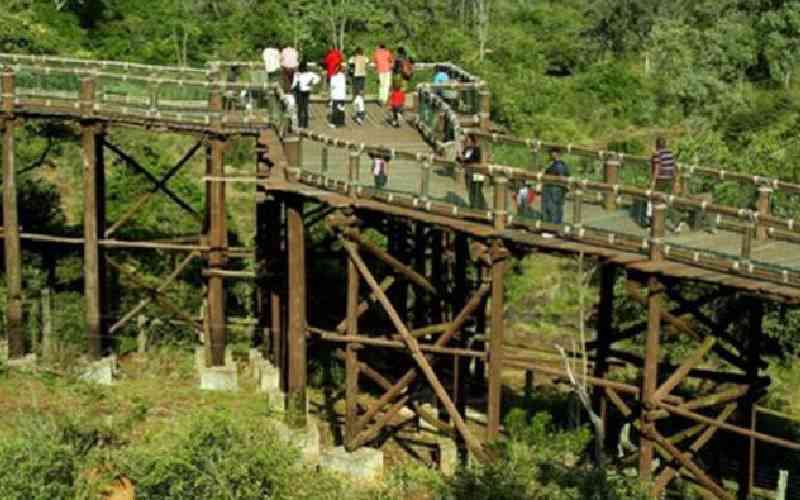Data from the Nairobi County Education office reveals that student numbers in public primary schools has been steadily declining over the past few years despite the advent of free primary education.
Free primary education was the brainchild of the Narc government under the leadership of retired President Kibaki. In a bid to fight high levels of illiteracy among Kenyans, made worse by high poverty rates and unemployment, free and compulsory education was introduced in January 2003 to attract as many pupils as possible.
To enforce this, the government went ahead and threatened legal action against parents who failed to take advantage of the offer.
In the early stages of free education, there was a phenomenal rise in enrollment of pupils in public primary schools, but interestingly, only a few years down the line, the excitement seems to have fizzled out.
Of course, the initiative had its challenges from the beginning that ranged from high enrollment rates that did not match the low number of teachers, to not having enough classrooms, desks and other requisite facilities.
In direct contrast to 2003 when private schools experienced setbacks as many of their students moved to public schools to take advantage of the government offer, public primary schools in Nairobi County are now seeing their student populations decline. Statistics from the Nairobi County Education Office show a drop in primary school enrollment in the past four years from 205,323 in 2010 to 192,841 in 2014.
Embakasi constituency has the highest enrollment of pupils in public primary schools in Nairobi County. However, it has witnessed a decline in enrollment in its primary schools from 48,669 pupils in 2010 to 29,786 in 2014, almost half the number.
These figures are worrying and act as an indictment on the government which, despite having introduced free primary education, did not come up with sustainable policies and modalities that could ensure continuity. These schools are populated by pupils from humble backgrounds. The free primary schooling concept was not fully understood and while school managements expect parents to finance some projects, the onus has been left to the government, which in turn has made life difficult for schools by the late disbursement of funds.
Many of the government and county schools in Nairobi are in a state of neglect. Most of the schools have a shortage of teachers and cannot, therefore, cope with the numbers. The net effect of this is poor performance in national examinations. Consequently, given the obsession with mean grades, many parents keep shuffling pupils between schools looking for any that posts good grades.
In part, this could explain the drop in student populations in public schools. On the other hand, it casts the discarded tradition of ranking schools in bad light.
Even though Members of Parliament recently voted to have the ranking of schools re-introduced, ostensibly because it encourages competition, this remains a fallacy because the playing ground is not level. For one, schools don’t operate on an equal footing. Some head teachers in public schools that are experiencing a crisis believe ranking is partly responsible for their poor state.
Over time, schools that have failed to register high grades in national examinations are the ones that have been hard hit by the exodus of students. Even though government schools are relatively cheap compared to private schools, a number of parents would rather spend their meagre earnings on paying fees in private schools where they believe their children will fare better.
Ranking, therefore, has had its negative effect on public primary schools. It behooves the government and the Ministry of Education to look into this serious issue with a view to ensuring that schools do not close for lack of students. The staffing problem must be addressed as well as rehabilitating the decrepit structures that pass for classrooms in some of the schools.
 The Standard Group Plc is a
multi-media organization with investments in media platforms spanning newspaper
print operations, television, radio broadcasting, digital and online services. The
Standard Group is recognized as a leading multi-media house in Kenya with a key
influence in matters of national and international interest.
The Standard Group Plc is a
multi-media organization with investments in media platforms spanning newspaper
print operations, television, radio broadcasting, digital and online services. The
Standard Group is recognized as a leading multi-media house in Kenya with a key
influence in matters of national and international interest.
 The Standard Group Plc is a
multi-media organization with investments in media platforms spanning newspaper
print operations, television, radio broadcasting, digital and online services. The
Standard Group is recognized as a leading multi-media house in Kenya with a key
influence in matters of national and international interest.
The Standard Group Plc is a
multi-media organization with investments in media platforms spanning newspaper
print operations, television, radio broadcasting, digital and online services. The
Standard Group is recognized as a leading multi-media house in Kenya with a key
influence in matters of national and international interest.





